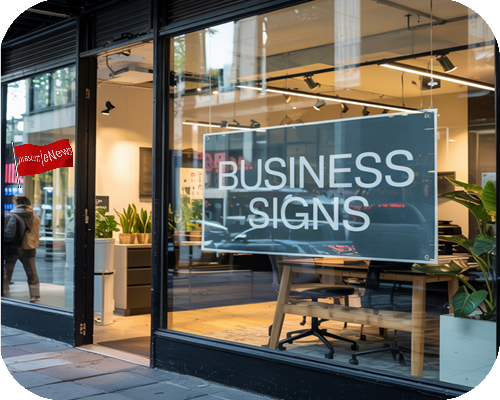A well-designed business sign can make or break a company. A creative sign not only attracts potential customers but also reflects the soul of the brand. Understanding what makes signage effective at its core can significantly expand a company’s reach and influence. In this post, we explore the key elements behind successful business sign design offered by any reputable sign company in Quincy, MA, that engages the maximum number of people.
Understanding the Purpose
Every sign begins with a clear understanding of its purpose. Is it meant to attract foot traffic, build brand recognition, or provide essential information? Identifying these goals early in the design process guides decisions on layout, color schemes, and messaging. A purpose-driven sign offered by a custom sign company in Quincy, MA, speaks directly to its intended audience.
Choosing the Right Colors
Color choice is one of the most important aspects of sign design. Colors evoke emotions—red may create urgency, while blue conveys trust and calmness. Choosing colors that align with your brand’s values and resonate with your target audience is essential. High contrast between background and text ensures readability from a distance.
Typography Matters
Typography isn’t just about choosing a font; it involves letter shape, form, and spacing, all of which impact readability and visual appeal. The font style should reflect the brand’s tone and remain legible, especially from afar. Overly decorative fonts might look attractive up close, but can reduce clarity. A balanced approach between aesthetics and functionality is key.
Simplicity is Key
A cluttered sign often confuses more than it communicates. Simplicity is crucial—deliver your message in the clearest way possible. Include only necessary elements to maintain focus and avoid overwhelming the viewer. Adequate white space enhances legibility and gives the sign a cleaner, more professional appearance.
Strategic Placement
A sign’s effectiveness greatly depends on its placement. To ensure maximum visibility, signs should be positioned where they naturally catch attention—consider height, angle, and surrounding foot or vehicle traffic. For example, placing signs at eye level in high pedestrian zones increases the likelihood they’ll be noticed.
Quality Materials
The materials used in a sign’s construction affect both its durability and its appearance over time. High-quality, weather-resistant materials are essential for outdoor signage to ensure longevity and maintain a polished look. A worn or damaged sign sends a message of neglect and can reflect poorly on the business.
Adding Brand Considerations
A sign serves as an extension of the brand. Incorporating elements such as logos, taglines, and brand colors enhances recognition and consistency. When the sign aligns with other marketing efforts, it helps communicate a unified brand message that strengthens audience trust and familiarity.
Utilizing Technology
Technology can significantly elevate the effectiveness of signage. Digital signs allow for real-time updates and can be tailored to different audiences or times of day. Interactive elements like QR codes can also engage customers further, prompting them to explore more. Embracing tech in signage strategies meets the expectations of today’s digitally engaged consumers.
Compliance and Regulations
Adhering to local compliance and regulations is a crucial step in business signage. Municipalities often enforce specific guidelines related to a sign’s size, height, lighting, placement, and even design elements, especially in historic or residential zones. Failing to meet these requirements can lead to costly fines, legal complications, or mandatory removal of the signage altogether. Beyond avoiding penalties, compliance reflects a business’s commitment to professionalism and respect for community aesthetics and safety standards. It also helps foster goodwill with local authorities and customers alike, showing that the business operates ethically and is mindful of its surroundings.
Evaluating and Adapting
Installing a sign isn’t the end of the process—it’s important to evaluate its effectiveness. Monitor customer feedback and engagement to assess its impact. Make data-informed adjustments when necessary. Revisiting the design and placement periodically helps keep the sign relevant and effective over time.
Conclusion
Crafting an effective business sign requires a blend of creativity, strategy, and attention to detail. By understanding elements like purpose, color, typography, simplicity, and placement, businesses can design signage that attracts and communicates clearly. When signs are also technologically integrated, regulation-compliant, and regularly reviewed, they become powerful tools that boost visibility and reinforce brand presence.
How useful was this article ?
Click on a star to rate it!
Average rating 0 / 5. Vote count: 0
No votes so far! Be the first to rate this post.
We are sorry that this post was not too useful for you!
Let us improve this post!
Tell us how we can improve this post?















